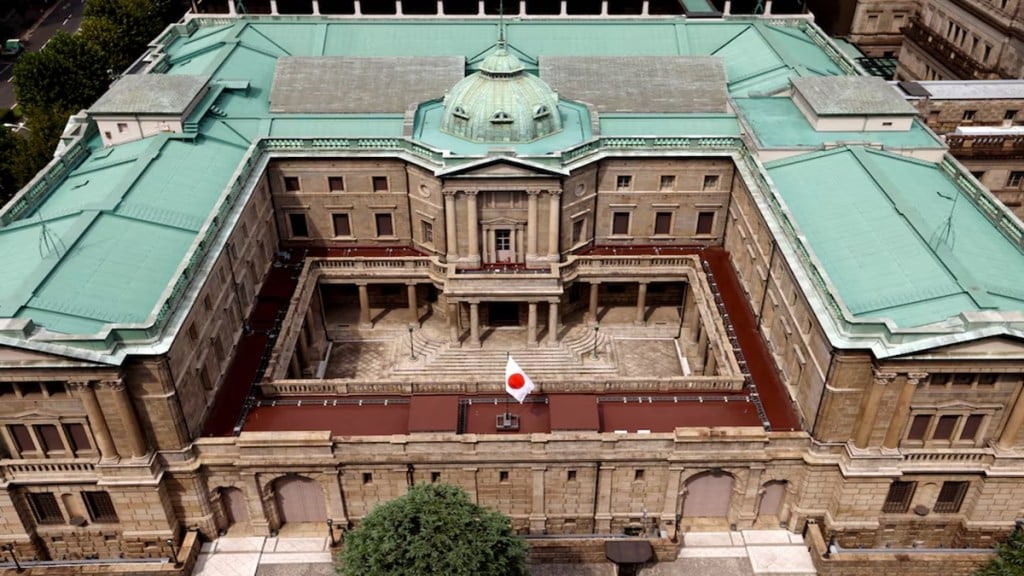The Bank of Japan (BoJ) raised its key short-term interest rate at its July 2024 meeting to around 0.25% from the prior range of 0 to 0.1% it set in March. “The BoJ has pulled off another mini masterstroke in its approach to changes in monetary policy, and again its ability to communicate important changes to the market, and not cause any tightening in financial conditions, shows that while they have an incredible challenge ahead of them, the BoJ are managing the situation admirably,” says Chris Weston Head of Research at Pepperstone.
The central bank added it would reduce the monthly bond-buying to JPY 3 trillion in January-March 2026 from the current pace of around JPY 6 trillion to pursue a more normal monetary policy.
Starting in August, the BoJ will offer to buy JPY 400 billion of 5 and 10-year JGBs at each of its operations, removing the ongoing offer range of JPY 400-550 billion. The changes are part of the central bank’s plan to lower its almost USD 5 trillion balance sheet and slowly retreat from the bond market.
In a quarterly outlook, the BoJ projected core inflation for FY 2024 to fall around 2.5%, less than April’s forecasts of 2.8%. It will be around 2% for FY25 and 26. On the GDP front, policymakers cut their 2024 growth forecast to 0.6% from 0.8%, on a statistical revision. For FY25 and 26, the bank maintained its GDP outlook at 1.0%.
The consumer confidence index in Japan climbed to 36.7 in July 2024 from 36.4 in the previous month, beating market forecasts of 36.5. It marked the highest consumer morale since April, as households’ sentiments improved for most components: willingness to buy durable goods (30.0 vs 29.6 in June), employment (42.0 vs 41.7), and overall livelihood (34.5 vs 33.8). Meanwhile, sentiment weakened for income growth (40.4 vs 40.6).
However, Japan’s housing starts shrank by 6.7% year-on-year in June 2024, steeper than a 5.2% fall in the previous month and far deeper than market forecasts of a 2.0% drop.
Japan’s 10-year government bond yield rose to around 1.04%, rebounding from a one-month low after the Bank of Japan raised its policy rate to 0.25%, confirming market speculations amid efforts to normalize monetary settings. The central bank also said it will reduce its monthly bond purchases to about 3 trillion yen per month in the first quarter of 2026.
Meanwhile, the Federal Reserve is anticipated to maintain the federal funds rate at a 23-year high of 5.25%-5.50% for the 8th consecutive meeting on July 31, 2024.
However, Fed policymakers will probably signal a potential rate cut in September amid signs of cooling inflation and a strong yet slowing labor market. In June, annual headline inflation dropped to 3%, its lowest level since June 2023, while the core rate hit an over three-year low of 3.3%. The annual PCE rate also declined to 2.5% from 2.6%. The core PCE rate, which is the central bank’s preferred inflation gauge, remained at 2.6%, well below its peak in 2022. Additionally, the unemployment rate is at 2021-highs of 4.1%, payrolls are slowing and lay-offs are rising.
Amit Goel, Co-Founder & Chief Global Strategist, Pace 360 says, “We expect the Fed to hold rates at 5.25%-5.50% following the July 31 FOMC decision. Inflation data since the June FOMC meeting has been encouraging, while activity data, on the net, has been slightly more concerning. Altogether, the committee is likely to assess that the balance of risks between its two objectives, i.e., price stability and full employment, is about even. The communications from the July meeting will offer only tentative hints of a September cut. The main reason for the hesitation is simply the amount of data still to come before the Sept. 17-18 FOMC meeting. There are two more inflation and job reports before then, and the data could change considerably.”


